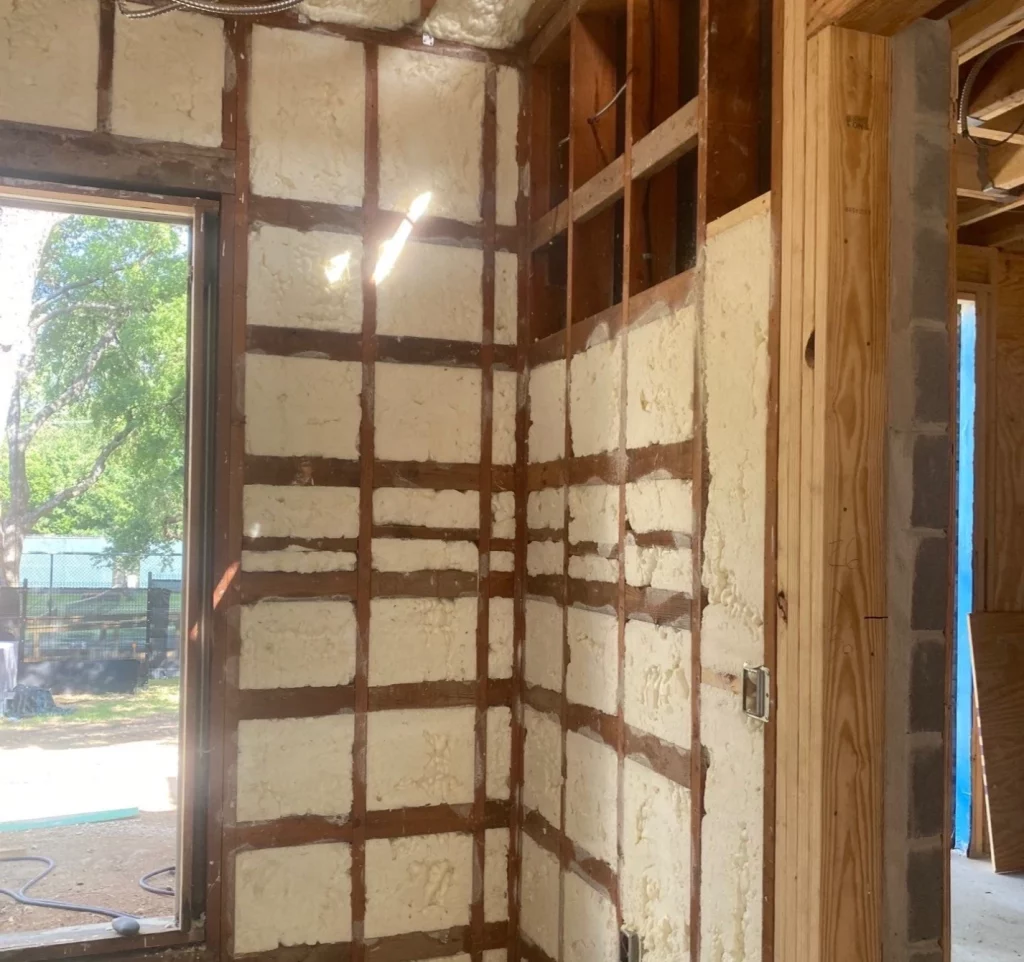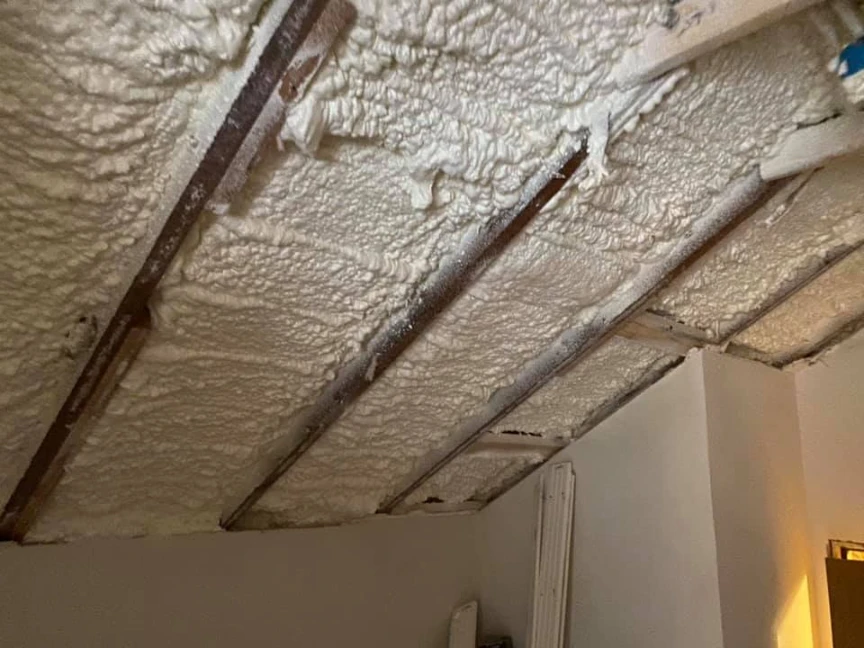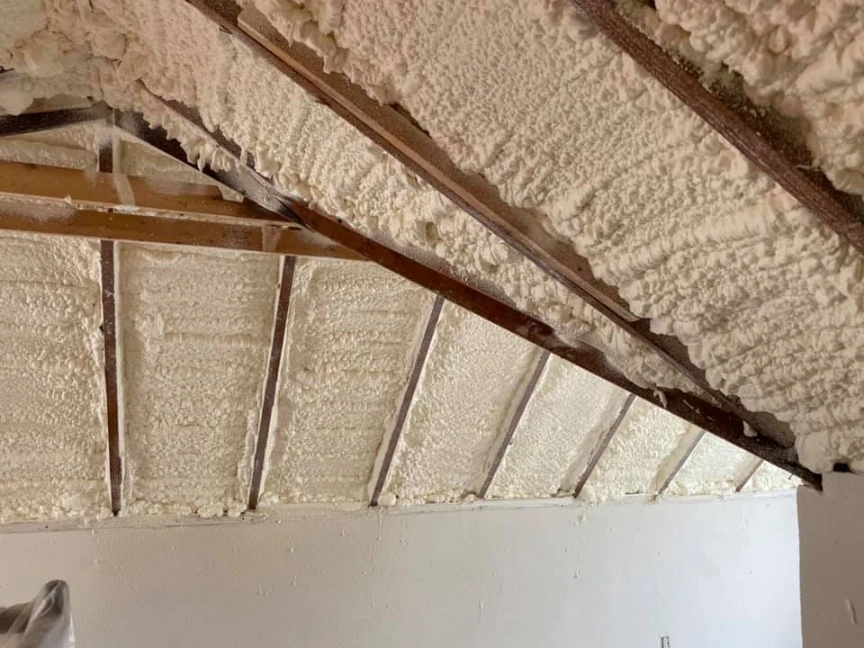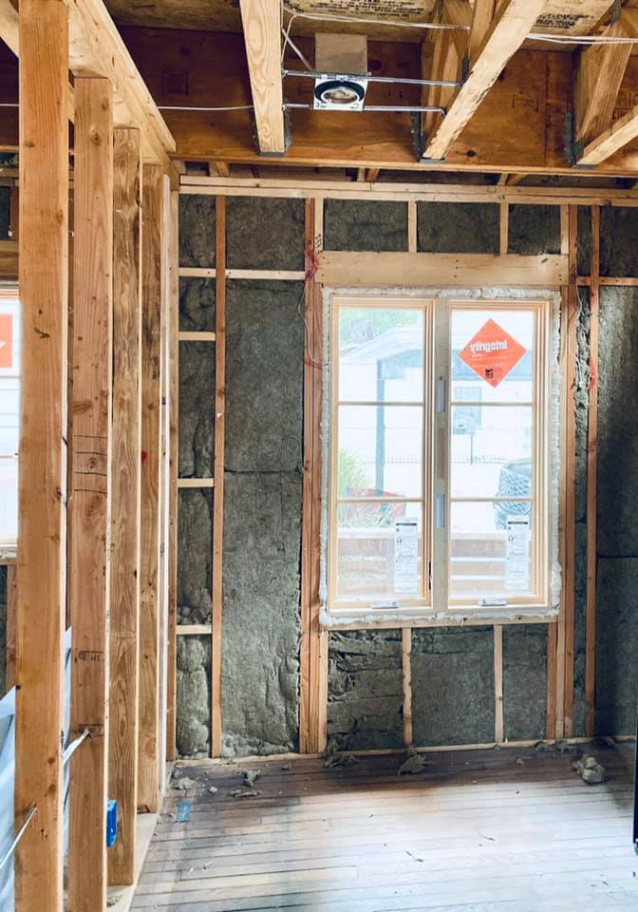Relying on space heaters to warm up cold rooms is a clear sign that a home is losing heat faster than it should. The core solution isn’t more portable heaters; it’s preventing heat from escaping in the first place. Better insulation solution directly addresses this problem by creating a continuous thermal barrier around the home. This barrier keeps the warm air generated by the central heating system inside during the winter, maintaining a stable and comfortable temperature throughout the house. As a result, cold spots are eliminated, the main HVAC system runs less often, and the need for costly, inefficient space heaters disappears.
This article explains the connection between insulation, heat loss, and home comfort. The information presented is based on extensive experience in building science and thermal performance, offering a clear path to reducing energy consumption and improving indoor living quality. By understanding how heat moves and how insulation stops it, homeowners can make informed decisions that provide lasting value.
The Dynamics of Heat Loss in a Home
Heat naturally moves from warmer areas to cooler ones until a temperature balance is reached. In a home, this process occurs through three primary methods: conduction, convection, and radiation.
- Conduction: Heat transfers through solid materials. This is why a wall feels cold to the touch; heat from inside is passing directly through the studs, drywall, and siding.
- Convection: Heat moves through the circulation of fluids (like air or water). Warm air rises and often escapes through gaps in the attic, while cold air seeps in through cracks around windows and doors, creating drafts.
- Radiation: Heat travels in a straight line and heats anything solid in its path. During winter, indoor heat can radiate outwards through windows and uninsulated walls.
Effective insulation is designed to counter all three forms of heat transfer. Materials like fiberglass and cellulose trap air pockets, slowing down conduction and convection. Radiant barriers, often used in attics, reflect heat, preventing it from radiating out of the home. The effectiveness of insulation is measured by its R-value, with a higher R-value indicating greater resistance to heat flow. According to the U.S. Department of Energy, adding insulation is one of the quickest and most cost-effective ways to reduce energy waste.
Why Space Heaters Are a Symptom, Not a Solution
While space heaters provide immediate, localized warmth, they are an inefficient and often risky way to heat a home. They are designed to heat a small, enclosed area, not an entire room with drafts and poor insulation. When a room feels constantly cold, it’s because the central heating system can’t keep up with the rate of heat loss. A space heater simply adds more heat to a leaky bucket.
Furthermore, space heaters pose significant safety risks. A report from the National Fire Protection Association shows that heating equipment is a leading cause of home fires and fire-related deaths. They can easily overload electrical circuits, and flammable materials placed too close can ignite. The long-term operating cost of running even one or two space heaters can add a surprising amount to a monthly electricity bill, often far exceeding the savings from turning down the central thermostat.
Priority Areas for Insulation Upgrades
To effectively reduce heat loss, insulation efforts should be focused on the parts of the home where the most significant heat transfer occurs.
Attics and Roofs
Because warm air rises, an uninsulated or under-insulated attic is a primary escape route for heat. This process, known as the “stack effect,” can account for a large portion of a home’s total heat loss. Properly insulating the attic floor slows this movement, keeping warm air in the living spaces below.
Bonus Tip: Before adding new insulation, it’s essential to air seal any gaps in the attic floor. Check around light fixtures, plumbing vents, and wiring holes. Insulation slows heat transfer, but it doesn’t stop air leaks.
Exterior Walls
Walls make up the largest surface area of a home’s thermal envelope. In older homes, wall cavities may have no insulation at all. Adding insulation, either through blown-in products or during a renovation, can make a substantial difference in comfort and reduce the heating load on the HVAC system.
Floors Above Crawl Spaces and Basements
Cold floors are a common complaint in winter. This is usually due to an uninsulated crawl space or basement underneath. Insulating the underside of the floor or the walls of the foundation prevents cold air from pulling heat out of the living area above, making rooms more comfortable underfoot.
A Look at Different Insulation Materials
Choosing the right insulation depends on the application, budget, and desired performance. Each type offers different strengths.
| Material Type | Average R-Value (per inch) | Air Sealing Ability | Moisture Resistance |
|---|---|---|---|
| Open-Cell Spray Foam | R-3.5 to R-3.8 | Excellent | Poor (absorbs water) |
| Closed-Cell Spray Foam | R-6.0 to R-7.0 | Excellent | Excellent (vapor barrier) |
| Fiberglass Batts | R-3.1 to R-4.3 | Poor | Moderate |
| Blown-In Cellulose | R-3.2 to R-3.8 | Good | Poor |
| Blown-In Fiberglass | R-2.2 to R-2.7 | Good | Good |
Things to Consider Before Making a Decision
Upgrading insulation is a significant home improvement project. Before proceeding, it’s wise to evaluate a few key factors.
- Professional Energy Assessment: An energy audit can pinpoint exactly where a home is losing the most heat. Using tools like infrared cameras, an auditor can identify hidden air leaks and areas with insufficient insulation, providing a clear roadmap for improvements.
- Local Climate Requirements: Insulation needs are not one-size-fits-all. Different regions have different recommended R-values. The ENERGY STAR program provides recommendations based on climate zones, ensuring homeowners install an appropriate amount of insulation for their location.
- Upfront Cost vs. Long-Term Savings: While there is an initial investment, new insulation pays for itself over time through lower energy bills. It’s helpful to view the project as a long-term investment in the home’s efficiency and comfort.
- Material Suitability: The best material for an attic may not be the best for a crawl space. For instance, closed-cell spray foam is an excellent choice for damp environments like basements due to its moisture resistance, while blown-in cellulose is a cost-effective option for filling empty wall cavities.

FAQS
What are the signs of poor insulation?
Common signs include high energy bills, rooms that are difficult to keep warm, cold drafts, and uneven temperatures between different rooms. In the winter, you might also notice ice dams forming on the roof, which indicates heat is escaping through the attic and melting snow.
Will better insulation help in the summer too?
Yes, absolutely. Insulation works by resisting heat transfer in both directions. In the summer, it helps keep the hot outdoor air from entering your home, reducing the workload on your air conditioner and keeping the house cooler.
How long does professional insulation installation take?
The timeline depends on the size of the home and the scope of the project. A typical attic insulation upgrade can often be completed in a single day. Insulating walls or crawl spaces may take longer, but a professional crew works efficiently to minimize disruption.
Is there a direct return on investment for upgrading insulation?
Upgrading insulation consistently ranks as one of the home improvement projects with the highest return on investment. Homeowners typically see immediate savings on their monthly heating and cooling bills, and the added comfort is a significant benefit.
A Permanent Step Toward Comfort
Upgrading a home’s insulation is a foundational step toward creating a more comfortable, energy-efficient living space. It addresses the root cause of cold rooms and high heating bills, providing a permanent solution where space heaters offer only a temporary and costly patch. By evaluating the home’s specific needs and investing in a well-insulated thermal envelope, homeowners can enjoy consistent temperatures year-round.
Ready to Improve Your Home’s Performance
To apply these concepts to your own property, a comprehensive evaluation of your home’s insulation and air sealing needs is the next logical step, and it’s best to consult with specialists. The team at Stellrr Insulation & Spray Foam can provide a detailed assessment and recommend effective spray foam solutions tailored to your property. To learn more or to schedule a consultation, please send an email to info@stellrr.com or call (512) 710-2839 to speak with an expert.
Sources
- U.S. Department of Energy – Provides official guidance on where to insulate a home for maximum energy efficiency.
- National Fire Protection Association – Offers statistics and safety information on home fires caused by heating equipment.
- ENERGY STAR – Provides climate zone maps and recommendations for insulation R-values across the United States.





